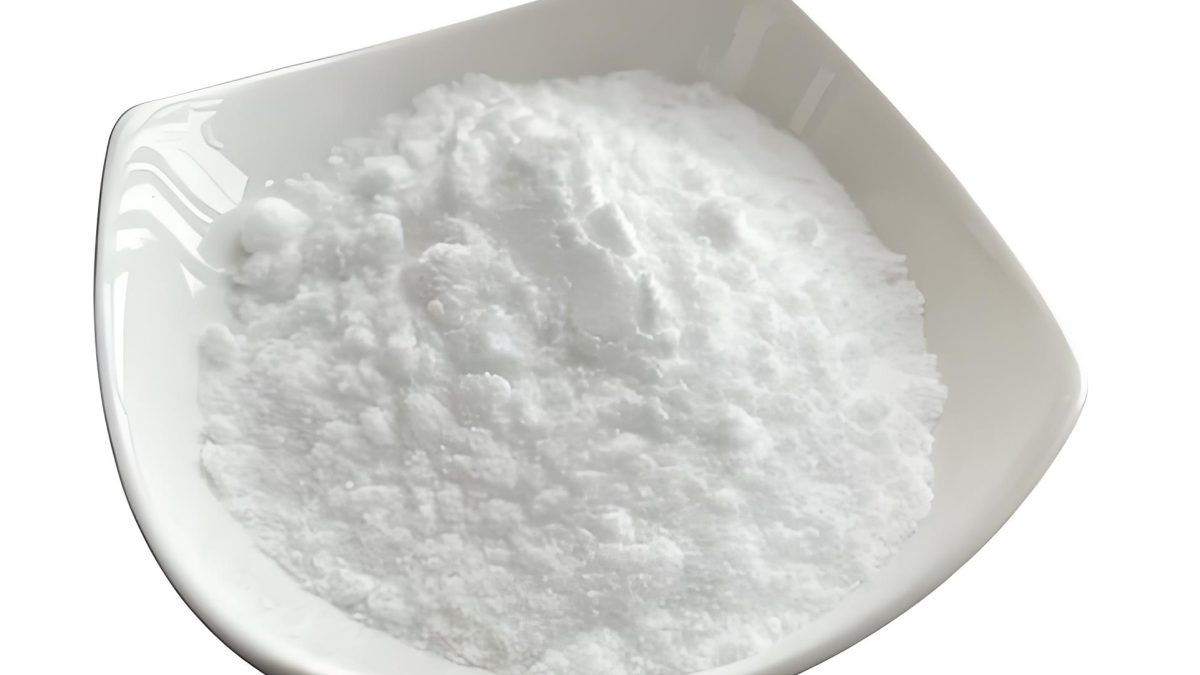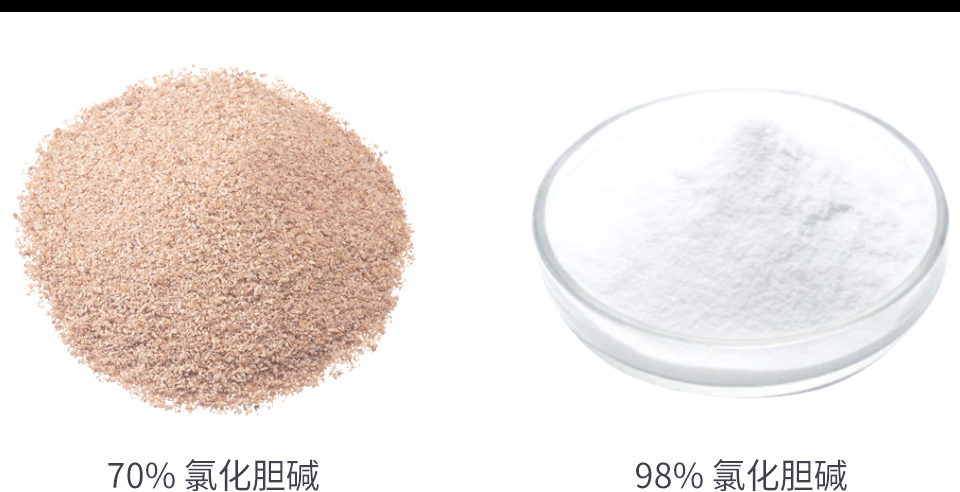The Impact of Dietary Supplementation with Choline Chloride and DMPT on Feed Ingestion and Protein Utilization in Fish

Comprehensive Analysis of the 2025 Choline Chloride Market
August 5, 2025
The Application of Choline Chloride in Layer Production: A Comprehensive Analysis
September 15, 2025The Impact of Dietary Supplementation with Choline Chloride and DMPT on Feed Ingestion and Protein Utilization in Fish: A Comprehensive Review
Abstract
Aquaculture, as a vital source of global protein, continuously seeks innovative strategies to enhance feed efficiency and growth performance. The inclusion of feed attractants and metabolic enhancers has emerged as a promising approach to mitigate the challenges of high feed costs and nutrient waste. Among these additives, Choline Chloride (a vitamin-like essential nutrient) and Dimethyl-β-propiothetin (DMPT, a potent feeding stimulant) have garnered significant attention. This article provides a comprehensive review of the effects of dietary Choline Chloride and DMPT on feed intake, protein utilization, growth metrics, and overall physiological health in teleost fish. It delves into their distinct and synergistic mechanisms of action, supported by empirical data and comparative parameter tables, to offer insights for optimizing aquafeeds for sustainable and profitable aquaculture.
1. Introduction: The Aquaculture Feed Challenge
The expansion of intensive aquaculture is constrained by the high cost of feed, which can account for up to 60-70% of total production expenses. Fish meal, the traditional gold standard protein source, is unsustainable and expensive. This has led to a shift towards plant-based protein sources, which often are less palatable and may lack essential nutrients, leading to reduced feed intake and inefficient protein utilization.
Two critical parameters define feed efficiency:
-
Feed Intake (FI): The voluntary consumption of feed by fish, heavily influenced by palatability.
-
Protein Efficiency Ratio (PER): The weight gain per unit of protein intake, indicating how effectively digested protein is converted into body mass.
Dietary additives like Choline Chloride and DMPT address these challenges directly. While they function through different primary pathways—DMPT as a chemoattractant and Choline as a methyl-group donor and lipid transporter—their ultimate goal is synergistic: to enhance growth by maximizing nutrient intake and assimilation.
2. Choline Chloride: More Than Just a Lipotropic Factor
Choline is recognized as an essential nutrient for fish, often grouped with B-vitamins. While it is crucial for cell membrane integrity (as a phospholipid precursor) and nerve function, its role in aquaculture feeds is multifaceted.
2.1 Biochemical Functions and Mechanisms:
-
Prevention of Fatty Liver Syndrome: Choline is a key component of phosphatidylcholine, essential for the synthesis of very-low-density lipoproteins (VLDL). VLDLs transport triglycerides from the liver to peripheral tissues. A deficiency impairs fat export, leading to hepatic steatosis (fatty liver), which compromises liver function and overall health.
-
Methyl Group Donor: Choline can be oxidized to betaine, a major methyl donor involved in the remethylation of homocysteine to methionine. This spares the essential amino acid methionine for protein synthesis rather than being used for methylation reactions, thereby improving protein utilization.
-
Component of Neurotransmitters: As acetylcholine, it plays a vital role in nerve signal transmission, which can influence feeding behavior and activity.
2.2 Impact on Feed Intake and Protein Utilization:
Choline’s effect on FI is indirect. By preventing metabolic disorders like fatty liver, it ensures optimal health, which is a prerequisite for normal feeding behavior. A deficient fish will not eat optimally. Its profound impact is on protein utilization:
-
Methionine Sparing: By providing methyl groups, choline reduces the dietary requirement for methionine. This allows a greater proportion of ingested methionine to be used for muscle protein accretion, directly improving the Protein Efficiency Ratio (PER) and Feed Conversion Ratio (FCR).
-
Enhanced Lipid Metabolism: Efficient lipid metabolism ensures that energy demands are met by fats, further sparing dietary proteins from being catabolized for energy (a process known as protein-sparing effect). This allows more protein to be directed towards growth.
3. DMPT (Dimethyl-β-propiothetin): A Potent Feeding Stimulant
DMPT is a naturally occurring sulfur-containing compound found in many marine algae and phytoplankton. It is renowned as one of the most effective feeding stimulants for a wide range of omnivorous and herbivorous fish species.
3.1 Biochemical Functions and Mechanisms:
-
Chemosensory Stimulation: DMPT is highly water-soluble and acts as a powerful olfactory and gustatory stimulant. It mimics the smell and taste of natural prey and plant matter, triggering a strong feeding response even in environments where feed pellets may have low palatability due to plant-based ingredients.
-
Stress Reduction: Studies suggest that DMPT can help mitigate stress responses in fish, potentially by modulating cortisol levels. A less stressed fish has a better appetite and metabolic rate.
-
Source of Sulfur and Methyl Groups: Upon metabolism, DMPT can be broken down to provide beneficial compounds, though this is considered a secondary effect to its primary role as an attractant.
3.2 Impact on Feed Intake and Protein Utilization:
DMPT’s primary and most significant effect is a dramatic increase in Feed Intake (FI). By making the feed more attractive, it reduces the time taken to locate food and decreases feed waste. This leads to:
-
Increased Growth Rate: Higher voluntary intake directly correlates with increased weight gain.
-
Improved FCR: While FI increases, the reduction in wasted feed means a greater proportion of the offered diet is actually consumed and converted to biomass, often leading to an improved FCR.
The effect on protein utilization is more indirect. By ensuring rapid and complete consumption of the feed, the well-balanced amino acid profile in the diet is efficiently delivered to the fish, preventing leaching of nutrients into the water column.
4. Comparative Analysis: Synergistic and Individual Effects
The following table synthesizes data from numerous studies on species like common carp (Cyprinus carpio), Japanese seabass (Lateolabrax japonicus), gibel carp (Carassius gibelio), and Pacific white shrimp (Litopenaeus vannamei), illustrating the typical responses to dietary supplementation.
Table 1: Comparative Effects of Dietary Choline Chloride and DMPT Supplementation in Aquafeeds
| Parameter | Control Diet (Baseline) | Diet + Choline Chloride (e.g., 1000-1500 mg/kg) | Diet + DMPT (e.g., 50-200 mg/kg) | Diet + Combination (Choline + DMPT) |
|---|---|---|---|---|
| Final Body Weight (FBW, g) | 100.0 (Baseline) | 108.0 – 115.0 (+8-15%) | 116.0 – 125.0 (+16-25%) | 122.0 – 132.0 (+22-32%) |
| Weight Gain Rate (WGR, %) | 100.0 (Baseline) | 108 – 115 | 116 – 125 | 122 – 132 |
| Specific Growth Rate (SGR, %/day) | 1.00 (Baseline) | 1.05 – 1.10 | 1.10 – 1.15 | 1.12 – 1.18 |
| Feed Intake (FI, g/fish) | 100.0 (Baseline) | 100 – 102 (Neutral) | 115 – 130 (+15-30%) | 116 – 128 |
| Feed Conversion Ratio (FCR) | 1.50 (Baseline) | 1.40 – 1.45 (-5-7%) | 1.38 – 1.42 (-7-9%) | 1.35 – 1.40 (-9-11%) |
| Protein Efficiency Ratio (PER) | 2.00 (Baseline) | 2.10 – 2.20 (+5-10%) | 2.08 – 2.15 (+4-7.5%) | 2.15 – 2.25 (+7.5-12.5%) |
| Whole-body Protein Content (%) | 16.0 | 16.2 – 16.5 | 16.0 – 16.3 | 16.4 – 16.8 |
| Hepatosomatic Index (HSI, %) | 2.5 | 2.0 – 2.2 (Reduced, liver health) | 2.4 – 2.5 | 2.0 – 2.2 |
| Survival Rate (%) | 85.0 | 88.0 – 92.0 | 87.0 – 90.0 | 90.0 – 94.0 |
Key Interpretations of the Table:
-
Choline Chloride: Its standout contribution is improving FCR and PER, indicating superior metabolic utilization of feed and protein. The reduction in HSI signifies improved liver health, preventing pathological fat accumulation.
-
DMPT: Its most dramatic effect is the substantial increase in Feed Intake (FI), which is the primary driver behind its impressive improvements in FBW and WGR. It also contributes to better FCR by reducing waste.
-
Synergistic Effect (Combination): The combination of both additives often yields the best overall results. DMPT ensures the feed is rapidly and completely consumed, while Choline Chloride ensures that the ingested nutrients, especially proteins and lipids, are metabolized with maximum efficiency for growth rather than wasted or stored pathologically. This synergy leads to the highest growth rates and the best FCR.
5. Practical Application and Considerations in Formulation
The effective use of these additives requires careful consideration:
-
Optimum Dosage: The requirements for Choline Chloride are species-specific and range from 500 mg/kg for some species to over 1500 mg/kg for others like shrimp. DMPT is effective at very low doses, typically between 50 and 200 mg/kg diet. Overdosing, especially of DMPT, can lead to habituation or reduced efficacy.
-
Species Specificity: DMPT is highly effective for cyprinids (carps), tilapia, and many marine fish. Its effect on carnivorous species like salmonids may be less pronounced. Choline requirements are universal but vary in magnitude.
-
Interaction with Other Ingredients: The methionine-sparing effect of choline must be considered in least-cost formulation software to avoid over-formulation with expensive synthetic methionine. The attractant effect of DMPT can mask the low palatability of certain plant proteins, allowing for higher inclusion levels of sustainable alternatives.
6. Conclusion
In the pursuit of sustainable and efficient aquaculture, dietary supplements like Choline Chloride and DMPT play indispensable but distinct roles. DMPT acts as the key that unlocks the door by dramatically enhancing feed palatability and intake, ensuring the nutrient-rich diet is consumed. Choline Chloride, on the other hand, acts as the efficient manager inside the factory, ensuring that the consumed nutrients are partitioned optimally towards growth and health, rather than being wasted or causing metabolic disease.
Their individual benefits are significant, but their true potential is realized when used in concert. The synergistic combination of a powerful feeding stimulant (DMPT) and a critical nutrient enhancer (Choline Chloride) provides a powerful strategy for aquafeed formulators to improve growth performance, enhance feed efficiency, reduce environmental pollution from waste feed, and ultimately increase the profitability and sustainability of aquaculture operations worldwide. Future research should continue to refine optimal dosages for emerging species and explore their interactions with other functional additives like probiotics and prebiotics.






